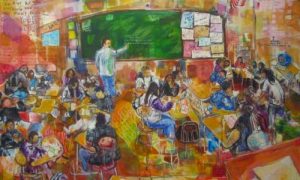Building first languages – Parents are often amazed how fast children build their first language. Children become fluent around three years of age. Compare this with the average adult attempting to acquire a second language, and it’s a quite remarkable achievement.

A five-year research project led by Professor Ian Roberts from the University of Cambridge aims to work out what it is about how a language is built that guides a child’s innate ability to acquire it.
In the late 1950s, the American linguist Noam Chomsky suggested that children are born with an innate ability to acquire language – a ‘blueprint’ for speaking any language on the planet. According to Chomsky, encoded in the human brain is an innate set of linguistic principles he called the ‘universal grammar’ that encompasses all of the properties that any language can have. The language the child then actually speaks is simply determined by exposure to the language (or languages in the case of a multilingual family) they hear as they develop.
But precisely how a universal grammar might underlie the range of languages we have today, not to mention the many past languages that have vanished completely, is a continuing puzzle, as Professor Roberts explained: “If you talk about a universal grammar then you might naturally think there is a universal language, when of course there isn’t. Rather, there are thousands of different languages.”
“The central notion is that the specification that the child has in the genome, the universal grammar, must be of the most abstract, general, structural properties of language and that different languages manifest these properties in slightly different ways,” he added. “The empirical question then is to work out what it is about a language that guides the child’s innate ability to acquire it. In other words, to understand how Chomsky’s theory could work, we need to work out how languages are built.”
Learn more about this topic by reading this article on Phys.
After reading “Building first languages”, you can check important issues for ESL teachers on the section PDFs. And visit my channel by YouTube.
